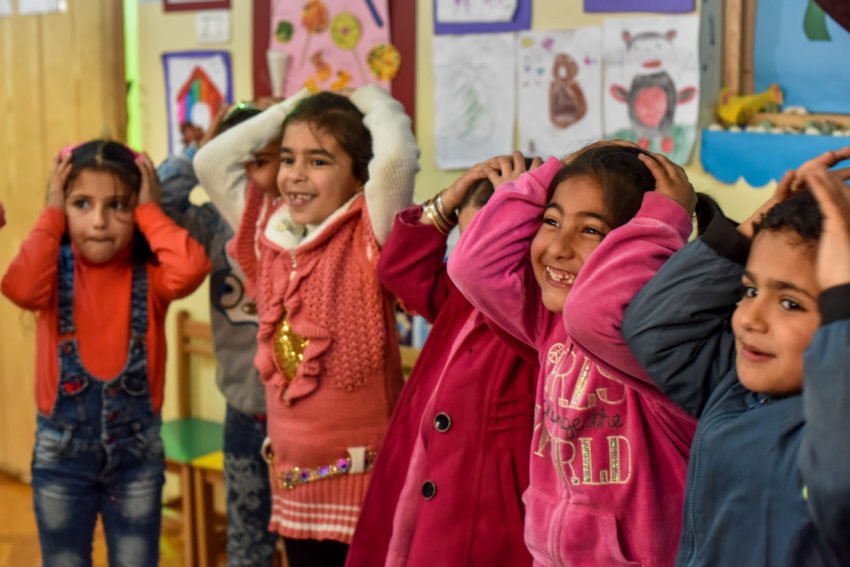Syrian refugee children who attend safe places for play and socialization, like World Vision’s Child-Friendly Spaces, have more confidence about avoiding child trafficking and labor than their peers who do not. And parents and caregivers say they have less concern for children’s safety if they take part.
World Vision and other child-focused relief agencies cooperated with Columbia University to study the effectiveness of Child-Friendly Spaces, resulting in these outcomes.
Child-Friendly Spaces are frequently set up by World Vision to provide stability for children in post-disaster or conflict settings. Children affected by Typhoon Haiyan in the Philippines attended World Vision Child-Friendly Spaces in the first five months after the storm struck November 2013.
Along with supporting education, the activity centers have been part of the programming World Vision offers for Syrian refugees. While the research reported on children at Domiz camp in the Kurdistan region of Iraq, World Vision’s work with Syrian refugees is in Jordan and Lebanon.
“Children are the most vulnerable group during conflict and in the aftermath of a disaster, both emotionally and physically,” says Heather MacLeod, a World Vision child protection expert, “and we know the long-term impact of their exposure to devastating events can be huge if not addressed.”
It’s important for children to “remember what it’s like to be a child again,” Heather says. Child-Friendly Spaces make that possible.
“The [Child-Friendly] Spaces provide young people with a safe place to play, participate in activities, learn about their rights to health and protection, and experience healing from any trauma they’ve experienced,” Heather says. “They also allow children to return to healthy routines and experience a sense of normalcy again.”
Child-Friendly Spaces are designed to protect children from environmental risks, promote psychosocial recovery, and help communities become more capable of caring for children.
Review of evidence:
World Vision and Columbia University announced the findings from the third evaluation in a series designed to assess the effectiveness of Child-Friendly Spaces. Earlier studies were done in a Ugandan camp housing refugees from the Democratic Republic of the Congo and among Somali refugees in Ethiopia.
Research produced by World Vision and Columbia University presents a review of the current evidence-base for Child-Friendly Spaces. Read Child-Friendly Spaces: A Structured Review of the Evidence Base.
Ethiopia field study: Evaluation of Child-Friendly Spaces: Ethiopia Field Study Report.
Uganda field study: Evaluation of Child-Friendly Spaces: Uganda Field Study Summary Report.
Iraq field study: Evaluation of Child-Friendly Spaces: Iraq Field Study Report.
Caleb Starrenburg of World Vision’s staff in Switzerland contributed to this article.


